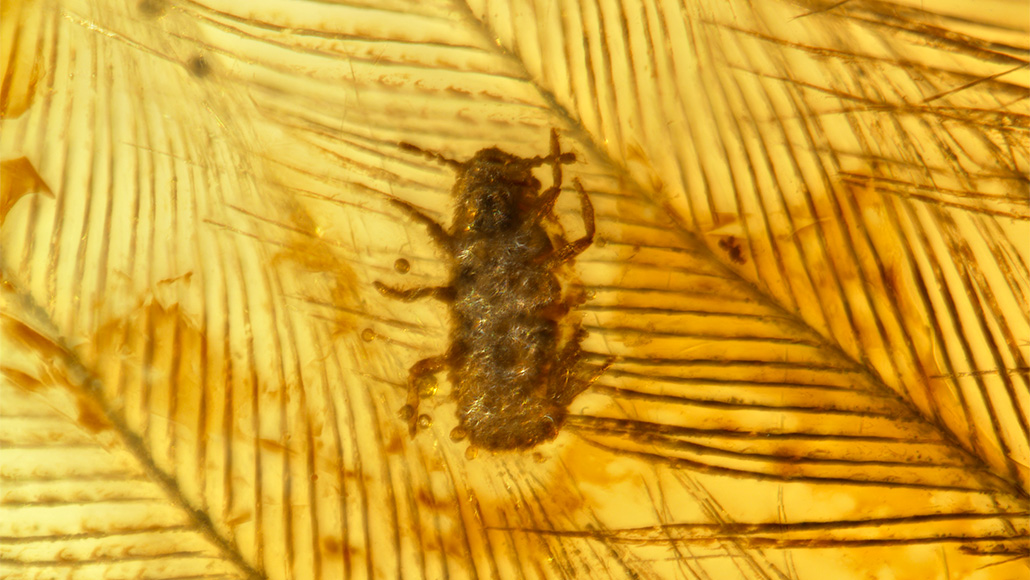Licelike insects munched on dinosaur feathers around 100 million years ago
Fossils in amber push the origin of feather-feeding insects back over 50 million years

A newly discovered ancient insect species, called Mesophthirus engeli, appears to have used strong mouthparts to chew on feathers. Claws and bristles on its legs would also have helped the insect climb or cling onto hosts’ feathers.
T. Gao







